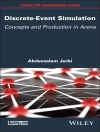This book is a tribute to Professor Pedro Gil, who created the Department of Statistics, OR and TM at the University of Oviedo, and a former President of the Spanish Society of Statistics and OR (SEIO). In more than eighty original contributions, it illustrates the extent to which Mathematics can help manage uncertainty, a factor that is inherent to real life. Today it goes without saying that, in order to model experiments and systems and to analyze related outcomes and data, it is necessary to consider formal ideas and develop scientific approaches and techniques for dealing with uncertainty. Mathematics is crucial in this endeavor, as this book demonstrates. As Professor Pedro Gil highlighted twenty years ago, there are several well-known mathematical branches for this purpose, including
- Mathematics of chance (Probability and Statistics),
- Mathematics of communication (Information Theory), and
- Mathematics of imprecision (Fuzzy Sets Theory and others).
These branches often intertwine, since different sources of uncertainty can coexist, and they are not exhaustive. While most of the papers presented here address the three aforementioned fields, some hail from other Mathematical disciplines such as Operations Research; others, in turn, put the spotlight on real-world studies and applications.
The intended audience of this book is mainly statisticians, mathematicians and computer scientists, but practitioners in these areas will certainly also find the book a very interesting read.
Tabela de Conteúdo
The Mathematics of the uncertain.- Using Mathematica to calculate shortest confidence intervals.- An optimal transportation approach for assessing almost stochastic order.- An alternative to the variation coefficient.- Nonparametric mean estimation for big-but-biased data.- Band depths based on multiple time instances.- On the combination of depth-based ranks.- A Bayesian network model for the probabilistic safety assessment of roads.- The spiking problem in the context of the isotonic regression.- Estimation of the inter-occurrence time between events from incomplete data.- Modelling dynamic hotel pricing with isotonic functions.- On multistage stochastic mixed 0-1 optimization with time-consistent stochastic dominance risk averse management.- Bivariate copula additive models for location, scale and shape with applications in Biomedicine.- Domain mean estimators assisted by nested error regression models.- Robust approaches for fuzzy clusterwise regression based on trimming and constraints.- Robust morphometric analysis based on landmarks.- Smoothing-based tests with directional random variables.- Asymptotic behavior of fractional blending systems.- Multiple hypothesis tests: A Bayesian approach.- δ -Records observations in models with random trend.- Recent developments and advances in joint modelling of longitudinal and survival data.- Long-term survival after abdominal aortic aneurysm repair.- Some comments on stochastic orders and posets.- Optimal experimental design for model selection: A partial review.- A statistical analysis of the treatment of type 2 diabetes in the presence of chronic kidney disease in patients hospitalized for heart failure.- A diagnostic test approach for multitesting problems.- The length-time bias in tourism surveys.- Detecting change-points in the time series of surfaces occupied by pre-defined NDVI categories in continental Spain from 1981 to 2015.- Choice functions and rejection sets.- Mathematical modeling in biological populations with reproduction in a non-predictable environment.- Field substitution and sequential sampling method.- Working with (too) few samples.- Estimation of the Owen value based on sampling.- The β -gradient for testing probability profiles.- Mixtures of Gaussians as a proxy in hybrid Bayesian networks.- Sublinear expectations: On large sample behaviours, Monte Carlo method, and coherent upper previsions.- A non-iterative estimator for interval sampling and doubly truncated data.












